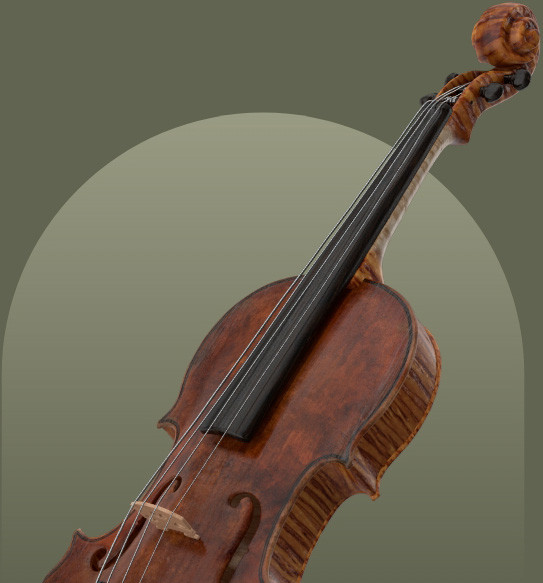John Dilworth
BAGATELLA, Antonio (II) Born 1759, d.c.1829 Padua Italy. Nephew of Antonio I, was also a maker, with his own shop in Venice from 1805, at the sign of S. Michele in the Merceria S. Salvador. His work is difficult to distinguish from that of Antonio (I), and most published sources conflate the two makers. [Pio]
George Hart
Made both Violins and Violoncellos, a few of which have points of merit He wrote a pamphlet in 1782 on a method of constructing Violins by means of a graduated perpendicular line similar to Wettengel’s ; but no benefit has been derived from it.
Cecie Stainer
b. 1755, Padua; d. 1829. Was a very good restorer of violins. Worked for many Germans— Prince Waldestein, Laibek, Prince of Wittemberg, Krauss of Prague—made few new instruments, and they were of no great merit; some violins and violoncellos made on the Cremona model were good.
Gained in 1782 a prize from the Padua Accademia for a work on the construction of the violin, which was published by the Accademia in 1786. Its full title was ” Regole per la costruzione de’ violini, viole, violoncelli e violoni. Memoria presentata all’ Accademia di scienze, lettere ed arti di Padova, al concorso del premio dell’ arti dell ‘anno 1782. Dal Signor Ant. Bagatella, Padovano, E coronato dall’ Accademia stessa. Padova, 1786.” This work touched less on innovations than on practical methods of arriving at a perfect imitation of the instruments of the great Italian makers, Amati especially; it was translated into German by Schaum under title of ” Ueber den Bau der Violinen, Bratschen, Violoncells und Violons ” (Leipzig, 1806).
It was from Bagatella’s work that Maugin, in his ” Manuel du Luthier,” took his method of tracing a fine model of a violin with only a rule and compass, which may also be seen somewhat shortened at the end of Bishop’s translation of Otto on the violin.
Willibald Leo Lütgendorff
Sohn des Gaetano B. und der Catarina Coppo-Scanferla. Er wollte ursprünglich
Geiger werden und war vermuthlich ein Schüler seines Verwandten
Pietro B. Ein literarisch und musikalisch gebildeter Mann. Seine
Bedeutung liegt allerdings weniger in seiner Kunst als Geigenmacher, als
vielmehr darin, dass er eine Abhandlung über die Theorie des Geigenbaues
schrieb, für welche er 1782 einen von der Akademie der Wissenschaften in
Padua ausgesetzten Preis erhielt. Diese Abhandlung wurde 1786 auf Kosten
der Akademie gedruckt und ist seitdem wiederholt erschienen und sowohl mehrfach
ins Deutsche als auch ins Französische, Englische etc. übersetzt worden.
Ihm verdankt man die wenigen erhaltenen Überlieferungen der Grundsätze,
nach denen die alten italienischen Meister gearbeitet haben. Über sein Leben
ist nicht viel mehr bekannt, als was er in seiner Schrift selbst erzählt, und dass
er mit Antonia Pelizzari verheirathet war, verschiedene Kinder hatte und
gänzlich verarmt und erblindet starb. Eine Zeit lang arbeitete er mit Danieli
zusammen. Eine Geige mit seinem Namen, von guter Arbeit und rothem Lack
wurde kürzlich in England um ca. 1000 Mk. gekauft. Eine andere zum Verkauf
ausgebotene Geige von »„Antonio Bagoletto in Padua, 1782 durfte, wenn
sie echt war, gleichfalls von Bagatella gewesen sein. — Er ahmte Jos. Guarneri
nach und steht Joseph Rocca nahe.
